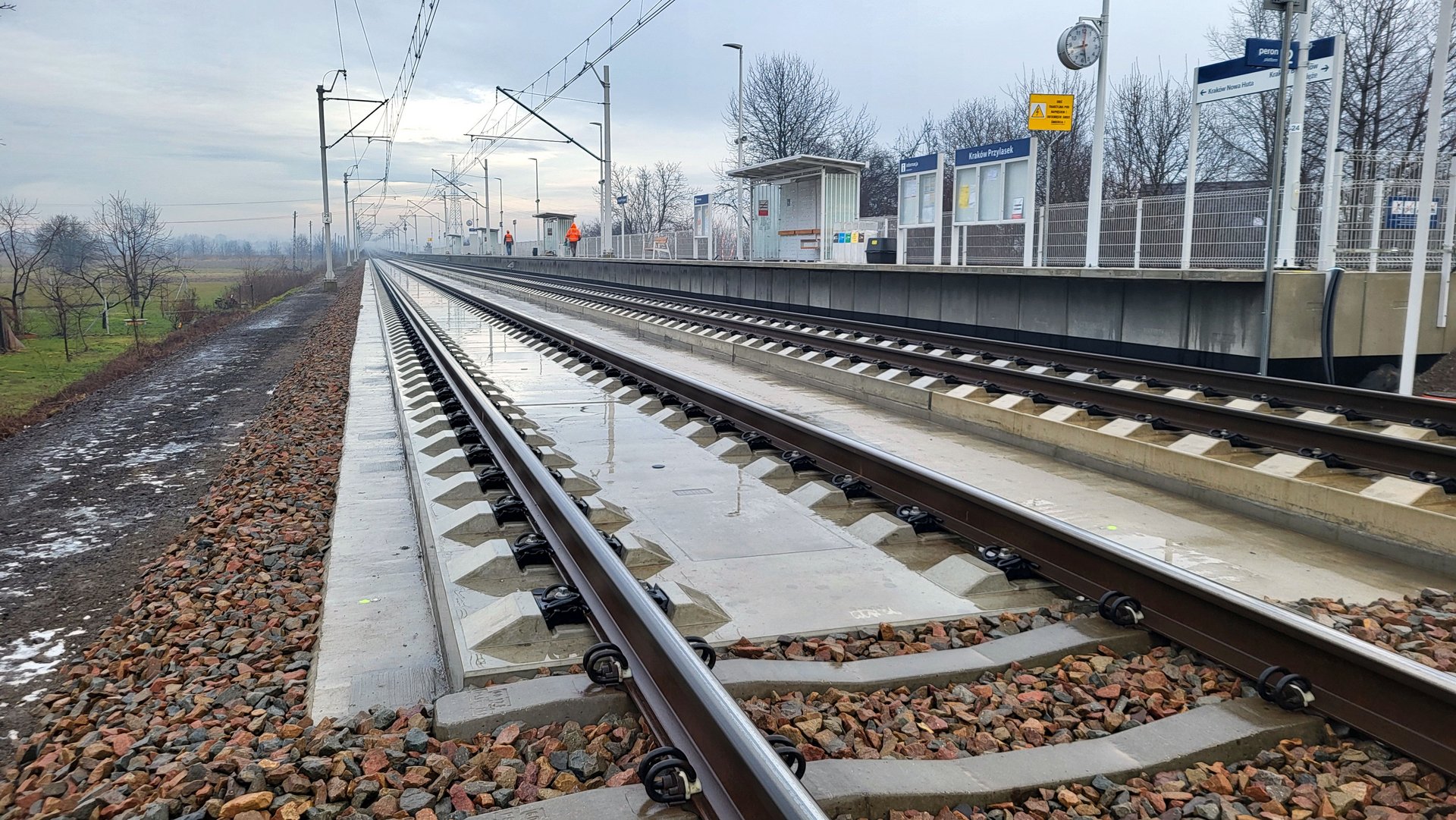PKP Polskie Linie Kolejowe S.A. is testing a new ballast-free pavement on a 200-meter section of railroad line No. 95 (Podłęże – Kraków Mydlniki), in the area of the Kraków Przylasek stop. The technology, developed in Austria, is designed to improve track durability and reduce noise and vibrations generated by passing trains. The tests will last until the end of September 2025, and positive results could lead to a wider implementation of this technology in Poland, especially in places with special technical requirements, such as tunnels.
Advantages of ballastless track
Ballastless track, also known as “feste Fahrbahn” or “slab track,” differs from traditional track construction, which relies on a combination of sleepers and ballast. In the new solution, the rails are mounted directly on precast concrete slabs, which increases the track’s stability and reduces its susceptibility to deformation. In addition, the use of elastomeric damping elements makes it possible to effectively reduce vibration and noise, which is particularly important in urban areas.
International experience
The slab track technology has been successfully implemented in many countries, including Germany, the UK, the Czech Republic, Qatar and Australia. In Austria, the system has been standard since 1995, with applications ranging from high-speed lines to subways. In the UK, it is planned for use on sections of High Speed 2 lines.
Prospects for Poland
If tests conducted by PKP PLK and the Railway Institute are successful, ballastless track could be implemented on a wider scale in Poland. Particularly promising is its use in tunnels and on heavily trafficked railroad lines, where noise and vibration reduction is crucial. In addition, the technology may find application in planned High-Speed Rail projects, offering greater durability and lower maintenance costs compared to traditional solutions.
Source: PKP Polskie Linie Kolejowe S.A., Wikipedia, slabtrackaustria.com / Photo: Piotr Hamarnik | PKP PLK








